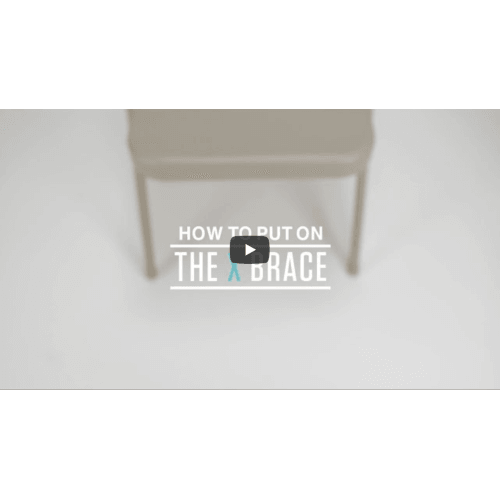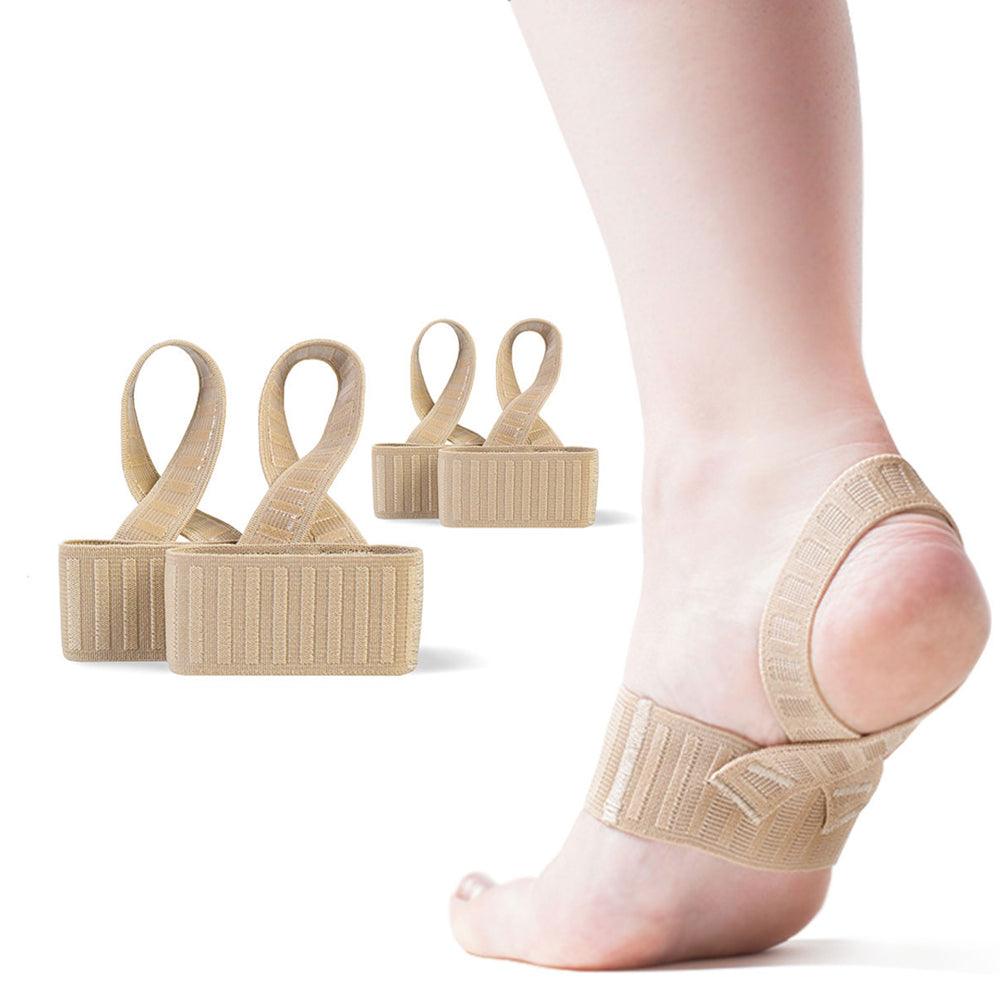If your child is involved in sports, heel pain is likely to be in your future and your child’s heel pain is not something you want to ignore. That heel pain could be Sever’s disease. Not uncommon in active, growing youth, Sever’s disease represents up 16% of the muscle, tendon, and ligament injuries in children.1 While Sever’s has the potential to be a sidelining injury that takes a long time to heal, immediate treatment can bring pain relief and can quickly put your child on the road to recovery.
"Many times I've seen young gymnasts sit out more than a year in order to reduce pain in their heels.", notes Dr. Joshua P. Eldridge.
What is Sever’s Disease?
As children grow, their bones grow faster than their muscles, tendons, and ligaments -- resulting in muscles that are stretched too tight. Most children simply don’t stretch enough to compensate for this imbalance.
Active children, especially those participating in sports involving a lot of running and jumping on hard surfaces (soccer, basketball, or gymnastics), often put extra strain on these already overstretched tendons. The result can be swelling and pain at the “growth plate”, the location where the tendons attach to the growing part of their heel.
Because growth plates are by nature areas of change in a young body they are weaker than the surrounding, more mature bone that has completed its growth, and can easily become inflamed. This inflammation is called Sever’s disease or calcaneal apophysitis.
Who Gets Sever’s Disease?
Sever’s disease typically affects children as they grow. It is more prevalent in girls at younger ages, between 8 – 13 years old, and boys between the ages of 7 and 15 years due to their later growth spurts. It often appears in those children active in “pounding” sports like soccer, basketball, or gymnastics which take place on hard surfaces.
How To Prevent Sever’s Disease?
Maintaining good flexibility, especially through consistent stretching of the hamstrings, calves, and plantar fascia, lower your child's risk for injuries during their growth spurt. It is important to note that participation in high-impact sports can make prevention difficult.
What Should You Do At The First Sign Of Heel Pain?
For many active youth or youth athletes, pushing through the pain is a rite-of-passage, but in the case of heel pain, treatment at the first sign of pain can keep them on their feet and in the meet, practice, or game longer.
As a member of the team treating patients at the Olympic Training Center in Colorado Springs leading up to the London Olympics and a Certified Chiropractic Sports Physician, Dr. Joshua P. Eldridge frequently saw the effects of high-impact training in young athletes.
“Nothing beats an athlete’s understanding of how to control their foot in order to prevent injury,” notes Dr. Eldridge “but at the time taping was the best option for immediate relief for athletes with heel pain.”
Dr. Eldridge spent years repeatedly taping arches to provide the support needed to take the stress off of the Achilles tendon and to limit the impact on the growth plate.
“Taping is time-consuming, temporary, and only as good as the medical professional’s knowledge, so results can vary – not exactly the solution you’re looking for to reduce pain and the chance of injury,” says Dr. Eldridge.
So, he put his knowledge of biomechanics and experience working with athletes to work to create a better solution. Using strategically constructed bands that mimicked the taping process, Dr. Eldridge created The X Brace.
“The unique “X” pattern in the patented brace provides both support and reduces arch pressure very similarly to how the low-dye taping procedure works but without requiring the expertise, time and tape necessary,” states Dr. Eldridge.

Immediate Relief from Sever’s Disease Heel Pain
The response to The Tuli's X Brace was extremely positive.
“Gymnasts who were experiencing pain due to Sever’s disease, plantar fasciitis and overpronation found that this new brace was working, and it was working fast,” states Dr. Eldridge.
When something works, word travels fast. Soon hundreds of gymnasts were “testing” The X Brace and all reported positive results. Immediate pain relief when wearing The X Brace meant that gymnasts were able to practice and compete without being sidelined. More importantly, the time-consuming process of taping was no longer necessary.
The athletes could simply place The X Brace onto their own foot and be ready to go! For athletes who do not compete barefoot, Dr. Eldridge recommends placing The X Brace directly on the barefoot with the sock covering the brace. Proper fit is crucial as slippage will lessen the effectiveness of the support.
Dr. Eldridge's Sever's Disease treatment also includes:
- Massage (2-3 times per week)
- Calf Stretching (after each massage, after practice and every night)
- Cold Water Soak (after every massage)
- Arch Support in every day shoes, heel cups in cleats
- Wearing The Tuli's X Brace any time your child is walking barefoot
- Compression (for at least 3 hours after practice)
About Dr. Joshua Eldridge
Dr. Josh is a Certified Chiropractic Sports Physician; he was a member of the team treating patients at the Olympic Training Center in Colorado Springs in the lead up to the London Olympics and is the author of Gymnast Care Book on Injuries Volume 1. He is the inventor of The X Brace, and has developed a treatment protocol for Sever's disease and heel pain that has helped thousands of gymnasts throughout the world. Dr. Eldridge brings practical, easy injury care and prevention that can be accomplished at home.
This simple yet highly effective, elastic foot brace is the premier treatment for foot pain associated with plantar fasciitis, Sever’s disease, and over-pronation. The X Brace is made in the USA and is sold as a pair.
Tuli's X Brace - Support brace for Sever's Disease:
OTHER RELATED TOPICS:
THE X BRACE WAS MY ANSWER FOR PAINFUL, BURNING FEET!
PLANTAR FASCIITIS, A REASON TO WORRY?
REDUCING THE PAIN OF SEVER’S DISEASE AND PLANTAR FASCIITIS
HOW TO CARE FOR YOUR TULI'S X BRACE
5 REASONS WHY YOU SHOULD STRETCH IN THE MORNING
PLEASE NOTE: The information on this website and article is for information only and should not be used as a substitute for consulting your doctor. Consult your doctor for proper diagnosis and rehabilitation.
References:
1 KVIST MH, HEINONEN OJ: Calcaneal apophysitis [Sever’s disease] a common cause of heel pain in young athletes. Scand J Med Sci Sports 1: 235, 1991; MCKENZIE DC, TAUNTON JE, CLEMENT DB, ET AL: Calcaneal apophysitis in adolescent athletes. Can J Appl Sport Sci 6: 123, 1981.; MICHELI LJ, FEHLANDT AF: Overuse injuries to tendons and apophyses in children and adolescents. Clin Sports Med 11: 713, 1992.; PRICE RJ, HAWKINS RD, HULSE MA, ET AL: The Football Association medical research programme: an audit of injuries in academy youth football. Br J Sports Med 38: 466, 2004






















